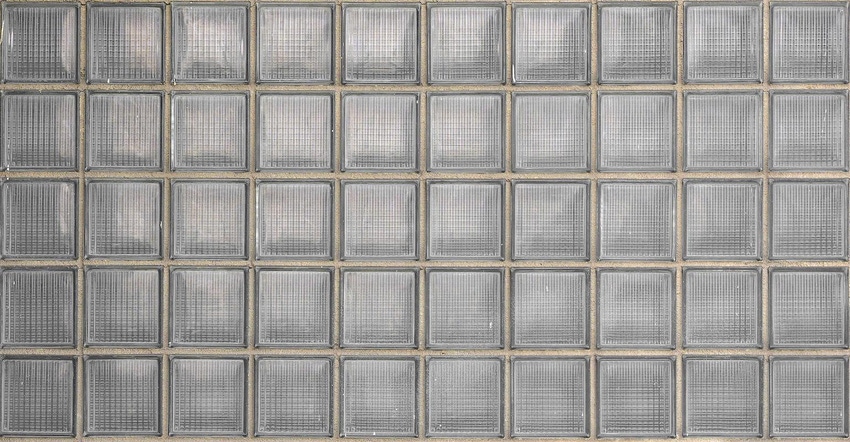6 Practical Innovations in Concrete Technology
These materials and products are being used in the concrete industry, although in limited applications.

Geosynthetic cementitious composite mats, 3D printing and self-healing concrete were some of the technologies Michelle Wilson of the Portland Cement Association touched on during her well-attended educational session titled “Innovations in Concrete Technology” in Las Vegas this year.
“There’s so much going on in our industry right now,” Wilson, the PCA’s director of concrete technology, said. “We’re not a sleeping dinosaur.”
During the session, Wilson discussed some of the innovations listed in Chapter 24 of the PCA’s reference book: “Design and Control of Concrete Mixtures.”
Here are some of the innovations Wilson covered, with supporting information provided by the PCA.
Translucent concrete
When cementitious ingredients are combined with fine aggregates and materials like optical fibers, translucent concrete can be created.
“This is what it sounds like; you can see through concrete,” Wilson said, adding that the material is high strength and usually prefabricated. “It’s rarely cast in place because it takes a lot of detail-oriented fibers.”
Wilson said translucent concrete is made by positioning optical fibers in such a way that it allows light to transmit through. The material is used in high-end architecture but also has practical uses to address safety concerns, like in subway stations where it provides additional visibility.
“The process incorporates regular cements and other cementitious ingredients, she said. “What (installers) do is pre-orient the fibers and cast the concrete on top of it.”
Self-cleaning concrete
Photocatalytic concrete uses titanium dioxide to absorb elements that are harmful to the environment, like nitrogen, and break them down into benign molecules of carbon dioxide that are washed away by rain.
Wilson said photocatalytic concrete has practical applications in high-traffic areas where buildups of oils are common. She said one of the most famous structures to use titanium dioxide in its concrete is Charles de Gaulle Airport in Paris, where it helps to combat the pollution caused by the airplanes.
Bendable concrete
Also known as ECCs, or engineered cementitious composites, bendable concrete is a fiber-reinforced concrete that has impressive ductility caused by natural polymers in the material, which allow it to be both hard and flexible.
“This is what we’d call an ultra-high-performance concrete, because it’s high strength,” she said.
Wilson said ECCs have “extremely high dosages of fibers” that are oriented in a way that makes the material comparable with steel versus conventional concrete. She said ECCs have a practical use structure and can dampen the effects of earthquakes and hurricanes on a structure.
ECCs also are effective for bridges as coupler links and provide advantages over steel, like being more resistant to corrosion, according to Wilson.
Self-healing concrete
Bacterial agents can be added to concrete to increase its likelihood of self-healing microcracks, a characteristic inherent to concrete that is related to hydration.
“If you put bacteria in concrete and allow it to be released when there’s tension, pressure and buildup will go toward the crack where the tension is forming” and help heal the crack, she said.
Wilson still calls self-healing concrete a “novel concept,” even though it was first developed in 2006. There are even applications that can spray self-healing agents onto concrete, though she questioned how deep the agents can penetrate into it.
“This innovation is in practice,” she said, adding it has potential.
3D printing
When 3D printing began in the concrete industry several years ago, Wilson said one large robot would usually work around a construction site. Today, she said the technology has evolved to the point where it can include mobile robots and smaller-scale machines.
Wilson said 3D printing, in the immediate future, can be most helpful for workforce development and addressing labor shortfalls.
Geosynthetic cementitious composite mats
GCCMs are an engineered concrete fabric that can be used in various applications such as reinforcing or rehabilitating drainage ditches, berms or abutments.
The composite mats have “excellent abrasion resistance and chemical performance with a typical design life of well over 50 years,” according to the PCA’s “Design and Control of Concrete Mixtures.”
“The cloth remains flexible for up to two hours and is easily manipulated to fit the contours of irregular installations,” the PCA says.
GCCMs typically can be rolled, cut and secured in place, and Wilson said they could be used for full-scale implementation or temporarily.
“It’s easy to take it down,” she said.
About the Author(s)
You May Also Like




